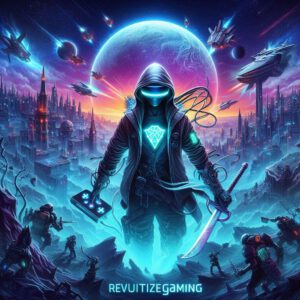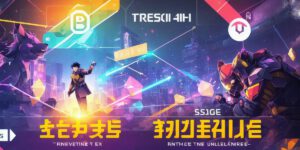Introduction
NFTs (Non-Fungible Tokens) have taken the digital world by storm, revolutionizing the way we buy, sell, and own art. With the rise of blockchain technology, artists now have a new platform to monetize their work and connect with their audience on a deeper level. In this article, we will explore 8-bit NFTs and how they work in the world of digital art.
What are 8-Bit NFTs?
8-bit NFTs are digital art pieces that use 8-bit graphics to represent images or animations. The term "8-bit" refers to the number of bits used to store a single pixel, which is a measure of the image’s resolution. This type of NFT has gained popularity among retro gamers and nostalgic individuals who appreciate the simplicity and charm of 8-bit art style.
How do 8-Bit NFTs work?
Like all NFTs, 8-bit NFTs are stored on a blockchain network. Each NFT has a unique digital identity that is represented by a cryptographic token. This token contains information about the artist, the artwork, and ownership rights. When an NFT is created, it is minted as a one-of-a-kind piece of art that can be bought, sold, and traded on various platforms.
One of the unique features of 8-bit NFTs is their limited availability. Since each NFT is one-of-a-kind, there are only a finite number of them available for purchase. This scarcity creates a sense of exclusivity that drives up the value of the artwork and makes it highly sought after by collectors.
Benefits of 8-Bit NFTs
One of the main benefits of 8-bit NFTs is their ability to connect artists with their fans in a more meaningful way. The simplicity of the art style creates a sense of nostalgia and emotional connection that can be difficult to achieve with more complex or abstract artwork. This connection allows artists to build a loyal fan base that supports their work and shares it with others, leading to increased exposure and potential revenue opportunities.
Another benefit of 8-bit NFTs is the ability to monetize older or underappreciated artwork. Since this art style was popular in the 1980s and early ’90s, many artists may have pieces that are now considered vintage or retro. By minting these pieces as NFTs, artists can generate new revenue streams from their back catalog while also introducing their work to a new generation of fans.
Case Study: The Rise of 8-Bit Games on the Blockchain
One excellent example of the potential of 8-bit NFTs is the rise of retro gaming on the blockchain. Platforms like Decentraland, SuperRare, and Rarible have created marketplaces for buying, selling, and trading 8-bit game assets. These assets include characters, items, and other collectibles from popular games such as Super Mario Bros., The Legend of Zelda, and Metroid.
By minting these assets as NFTs, game developers can generate new revenue streams while also introducing their work to a new audience. Additionally, by creating a sense of ownership and scarcity around these assets, collectors are more likely to invest in them and share them with others, leading to increased exposure and potential revenue opportunities for the creators.
Summary
In conclusion, 8-bit NFTs represent an exciting new opportunity for artists to monetize their work and connect with their audience on a deeper level. With the rise of blockchain technology and the increasing popularity of retro gaming, this type of NFT is poised to become a significant player in the digital art world. As the market continues to evolve, we can expect to see even more innovative and creative uses of 8-bit NFTs emerge, leading to new revenue streams and exciting artistic possibilities.



